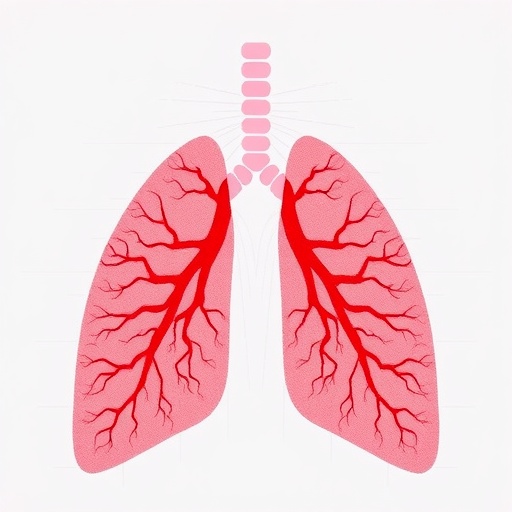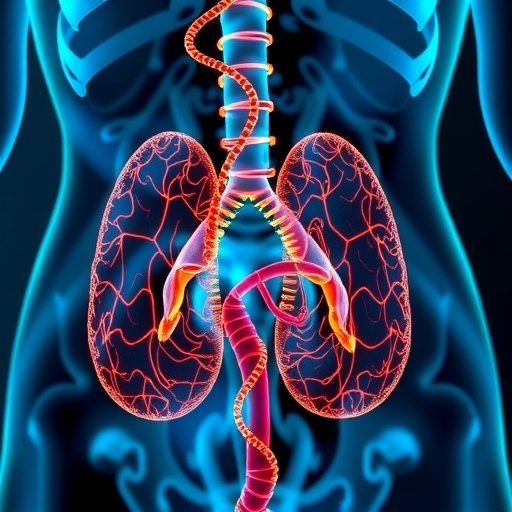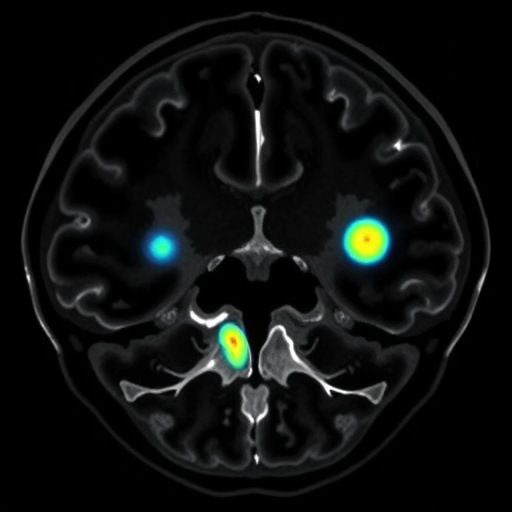A novel study published in BMC Cancer unveils a compelling association between the triglyceride-glucose (TyG) index and the pathological invasiveness of lung adenocarcinoma in patients presenting with solitary pure ground-glass nodules (pGGNs). This research addresses a significant gap in oncological and metabolic understanding by exploring how a surrogate marker for insulin resistance (IR) could influence the aggressiveness of lung cancer phenotypes. Given the rising incidence of lung adenocarcinoma detected through routine low-dose CT screenings, these findings could reshape risk stratification and clinical management paradigms.
Lung adenocarcinoma is the dominant form of non-small cell lung cancer (NSCLC), and its pathological classification profoundly impacts treatment approaches and prognostic evaluations. Patients exhibiting solitary ground-glass nodules, particularly those measuring 3 cm or less, usually undergo surgical resection following confirmation of malignancy. However, the extent of invasiveness—ranging from adenocarcinoma in situ (AIS) and minimally invasive adenocarcinoma (MIA) to invasive lung adenocarcinoma (ILA)—remains challenging to predict with non-invasive criteria alone. This study contributes a vital piece by correlating metabolic markers with tumor pathology.
The TyG index, calculated from fasting plasma triglyceride and glucose levels, has emerged as a reliable and convenient marker of insulin resistance, a pathophysiological state implicated in cancer development and progression. While previous investigations have linked insulin resistance to various malignancies, including breast and colorectal cancers, its specific relationship to lung adenocarcinoma invasiveness had not been firmly established. This study’s retrospective design leverages clinical and imaging data from 278 patients undergoing routine chest CT scans and subsequent surgical interventions.
A crucial technical aspect of the analysis involves the classification of patients into invasive and non-invasive groups based on histological confirmation post-surgery. The non-invasive category comprises adenocarcinoma in situ and minimally invasive adenocarcinoma, both characterized by limited tissue infiltration and relatively favorable outcomes. In contrast, ILA denotes a more aggressive pathology with a greater propensity for metastasis and poorer prognosis. The standardized TyG index calculation, integrating fasting triglycerides and glucose, enables a robust assessment of systemic metabolic dysfunction.
Statistical modeling, utilizing multivariable logistic regression, adjusted for confounders such as age, sex, body mass index, and diabetes status, uncovered a striking correlation: each incremental increase of one unit in the TyG index was associated with a 6.14-fold elevation in the odds of harboring invasive lung adenocarcinoma. This quantitative relationship underscores the potential mechanistic involvement of metabolic disturbances in modulating tumor biology and aggressiveness.
Furthermore, stratification by TyG tertiles revealed a dose-dependent effect where patients in the highest TyG category exhibited nearly triple the odds of invasive pathology compared to those in the lowest group. Notably, subgroup analyses maintained the positive association across gender, age brackets, and weight classifications, indicating the robustness of the TyG-invasiveness link. The subtle interaction trends seen with sex and type 2 diabetes mellitus suggest biological nuances worth deeper mechanistic exploration.
The study’s implications extend beyond academic inquiry into tangible clinical utility. Given the ease and low cost of measuring fasting triglycerides and glucose, the TyG index could be integrated into preoperative risk assessments to better stratify patients according to their tumor invasiveness risk. This metabolic marker offers potential adjunctive value in imaging-based screening protocols, especially when non-invasive differentiation between pGGN subtypes remains ambiguous.
From a molecular oncology perspective, the connection between insulin resistance and cancer invasiveness may involve complex pathways including enhanced cellular proliferation, inflammation, and altered metabolic signaling cascades such as the PI3K/Akt/mTOR axis. Hyperinsulinemia and related metabolic stressors might create a microenvironment conducive to tumor progression and immune evasion. These insights encourage a multidisciplinary approach integrating endocrinology and oncology to refine therapeutic strategies.
However, the study authors emphasize the necessity of prospective validations to confirm these cross-sectional findings and evaluate the TyG index’s temporal predictive value. The retrospective and single-center nature represents limitations, and future studies incorporating longitudinal data and multi-institutional cohorts are warranted to establish causality and generalizability. Additionally, integrating molecular profiling of tumors with metabolic indices could illuminate heterogeneous tumor-host interactions.
The intersection of metabolic health and cancer pathology observed here resonates with the broader paradigm shift recognizing cancer as a systemic disease influenced by host factors. Insulin resistance, a modifiable condition, could thus represent both a biomarker and a therapeutic target. Interventions aiming at metabolic normalization might offer a novel adjunct in reducing lung adenocarcinoma aggressiveness, potentially improving survival outcomes.
Altogether, this investigation in BMC Cancer exemplifies the growing integration of metabolic sciences into oncology research, highlighting how systemic metabolic dysfunction interplays with tumor microenvironments. The findings broaden understanding of lung adenocarcinoma pathobiology and open avenues for translational applications that can enhance patient-specific prognostication and management.
As cancer screening programs evolve, incorporating metabolic indices like the TyG index could substantially improve the precision of invasive risk prediction among patients with ambiguous radiological findings such as pGGNs. This represents a promising horizon where simple blood tests complement high-tech imaging to guide clinical decisions. Such integrative risk profiling reflects the future of personalized oncology care.
In sum, this pioneering study suggests that the triglyceride-glucose index is not merely a metabolic calculator but a potential sentinel marker signaling aggressive tumor behavior in lung adenocarcinoma presenting as solitary ground-glass nodules. The clinical oncology community awaits prospective studies to confirm these observations and translate them into actionable protocols that could transform patient outcomes.
The report underscores a crucial biological linkage, prompting renewed interest in metabolic health’s role in cancer biology. The implications challenge clinicians and researchers alike to rethink conventional boundaries, fostering interdisciplinary innovation aimed at decoding cancer’s multifaceted nature. The TyG index could emerge as a pivotal biomarker heralding a new era in lung cancer risk stratification and targeted intervention development.
Subject of Research: The relationship between the triglyceride-glucose index, a marker of insulin resistance, and the pathological invasiveness of lung adenocarcinoma in patients with solitary pure ground-glass nodules.
Article Title: Association between triglyceride-glucose index and pathological invasiveness of lung adenocarcinoma in patients with solitary ground-glass nodules: a cross-sectional study
Article References:
Pan, M., Yuan, Y., Chen, Z. et al. Association between triglyceride-glucose index and pathological invasiveness of lung adenocarcinoma in patients with solitary ground-glass nodules: a cross-sectional study. BMC Cancer 25, 1584 (2025). https://doi.org/10.1186/s12885-025-15017-8
Image Credits: Scienmag.com
DOI: https://doi.org/10.1186/s12885-025-15017-8
Tags: cancer aggressiveness and triglyceride levelsinsulin resistance and cancer invasivenesslow-dose CT screening for lung cancerlung adenocarcinoma and metabolic markersmetabolic syndrome and lung cancernon-small cell lung cancer risk factorsoncological research and metabolic understandingpathological classification of lung adenocarcinomapredicting lung cancer invasivenesssolitary ground-glass nodules in lung cancersurgical resection of lung tumorstriglyceride-glucose index and lung cancer





